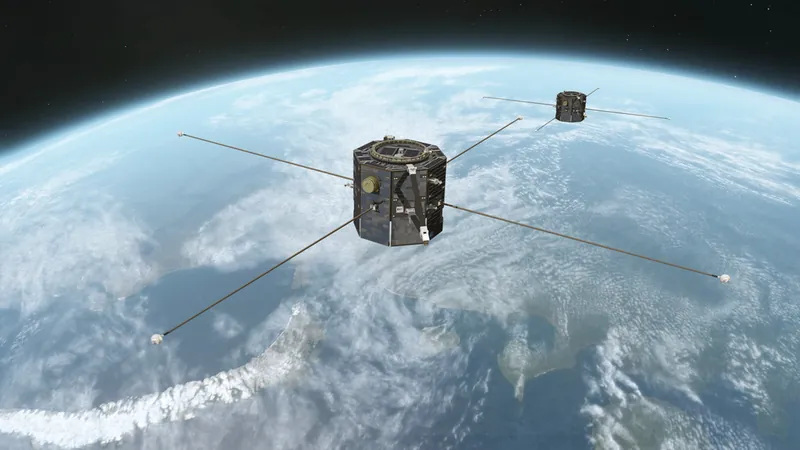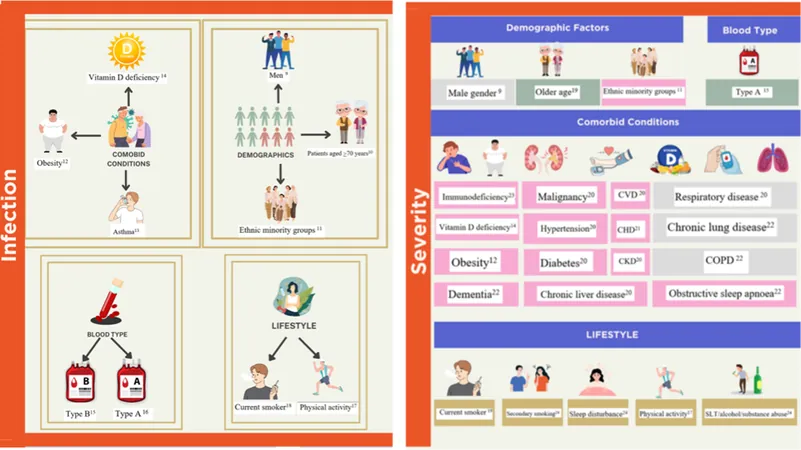
NASA's Game-Changing Twin Satellites to Shield Earth from Solar Storms
2025-07-19
Author: Wei Ling
A New Era in Space Weather Monitoring
Get ready for a groundbreaking mission! NASA is gearing up to launch its Tandem Reconnection and Cusp Electrodynamics Reconnaissance Satellites (TRACERS), a duo of satellites set to study magnetic storms around Earth like never before. These advanced spacecraft promise to enhance our understanding of how solar activities impact not only the atmosphere but also critical technologies on Earth.
What Are TRACERS Up To?
Orbiting in a sun-synchronous path always over the daytime side of Earth, TRACERS will glide through the unique polar cusps—two openings in Earth's magnetosphere where magnetic field lines dip toward the poles. This is where solar winds slam into our protective barrier, triggering a process known as magnetic reconnection, which can unleash bursts of energy that trigger spectacular auroras and pose risks to satellites.
Timing is Everything!
Launching no earlier than late July, the TRACERS mission aims to provide invaluable insights into the magnetic-reconnection process. Joe Westlake, Director of NASA's Heliophysics Division, highlights the significance: "Understanding how solar energy affects Earth can help protect our GPS systems, communications networks, power grids, and even astronauts in space."
Dual Satellites, Double the Data!
One of TRACERS' key innovations is its twin-satellite approach. Unlike previous missions that simply took isolated snapshots of magnetic reconnection events, TRACERS will yield closely-timed, real-time data. David Miles, the principal investigator from the University of Iowa, explains, "By following each other closely, the satellites will provide two sets of measurements in quick succession, meaning we can better understand the dynamics in these changing environments."
Collaborative Science: Working with Other Missions
TRACERS won't be operating in isolation; it will complement other NASA missions such as the Magnetospheric Multiscale Mission (MMM) and the Polarimeter to Unify the Corona and Heliosphere (PUNCH). Collectively, these missions are enhancing our understanding of solar wind interactions and their implications for life on Earth.
A $170 Million Lifeline for Earth!
With a budget of $170 million, TRACERS is set for launch atop a SpaceX Falcon 9 rocket alongside other small missions. The research gleaned from TRACERS could be vital in fortifying our infrastructure against the unpredictable nature of solar storms, ultimately safeguarding our technological way of life.
Why This Matters for Everyone
As we become increasingly reliant on technology dependent on stable space conditions, the results from TRACERS could be essential in mitigating the impacts of solar storms. As Westlake keenly asserts, "It's going to help us keep our way of life safe here on Earth," paving the way for a future where we're better equipped to navigate the challenges posed by space weather.




 Brasil (PT)
Brasil (PT)
 Canada (EN)
Canada (EN)
 Chile (ES)
Chile (ES)
 Česko (CS)
Česko (CS)
 대한민국 (KO)
대한민국 (KO)
 España (ES)
España (ES)
 France (FR)
France (FR)
 Hong Kong (EN)
Hong Kong (EN)
 Italia (IT)
Italia (IT)
 日本 (JA)
日本 (JA)
 Magyarország (HU)
Magyarország (HU)
 Norge (NO)
Norge (NO)
 Polska (PL)
Polska (PL)
 Schweiz (DE)
Schweiz (DE)
 Singapore (EN)
Singapore (EN)
 Sverige (SV)
Sverige (SV)
 Suomi (FI)
Suomi (FI)
 Türkiye (TR)
Türkiye (TR)
 الإمارات العربية المتحدة (AR)
الإمارات العربية المتحدة (AR)